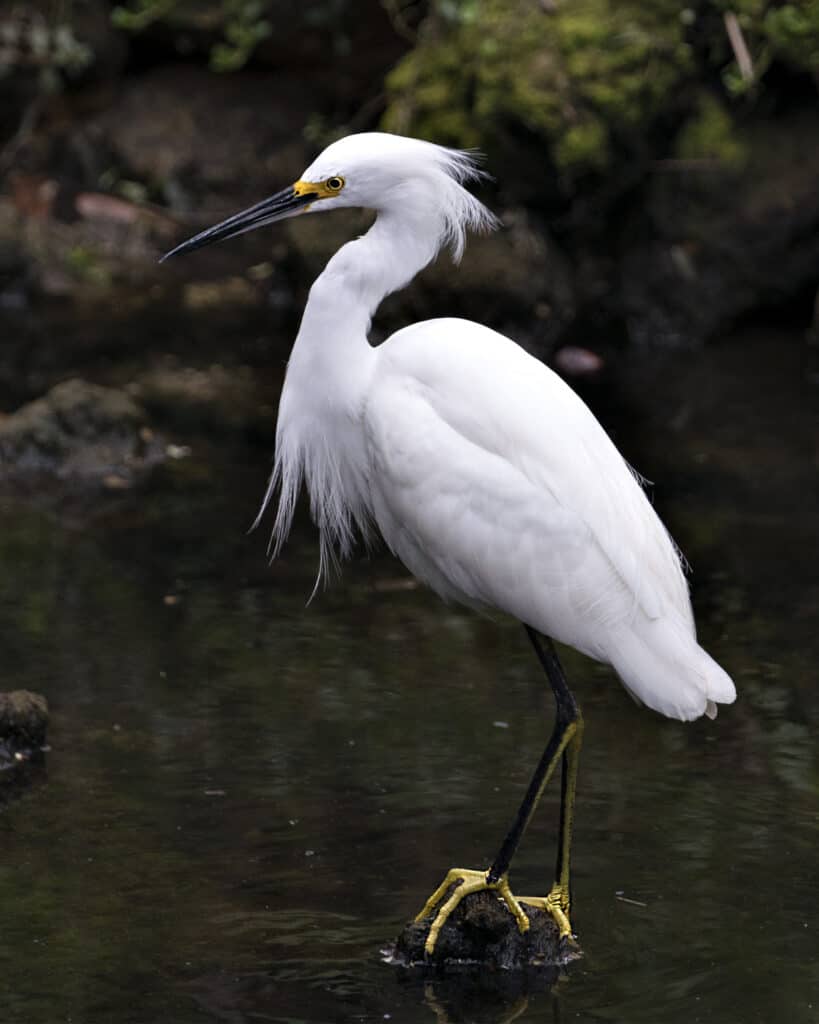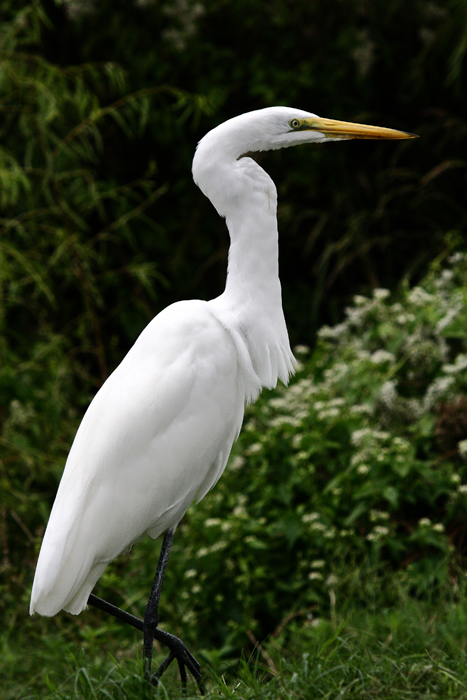The egret (Ardeidae) is a long-legged, long-necked, wading bird inhabiting every continent. It lives in freshwater and saltwater habitats, such as marshes and wetlands, where it spends its day wading in shallow water, catching fish and other creatures. Most species form lifelong pair bonds with their mates and nest and roost in mixed species groups. Find out everything there is to know about this heron family, including where they live, what they eat, and how they behave.
5 Amazing Egret Facts
- Egrets avoid the coldest regions, high mountains, and deserts.
- They nest in tall trees over water with 10 to 30 other pairs.
- Most species are relatively vocal, making harsh croaking sounds and squeals.
- They feed in flocks, waiting in shallow water for fish to swim by before thrusting their beaks to catch their prey.
- Most animals don’t mess with these large birds; they find safety in numbers by staying in large communities.
Where to Find the Egret
Egrets live on every continent but avoid the coldest regions, arid deserts, and extremely high mountains. They live in areas with freshwater and saltwater, including ponds, streams, lakes, marshes, wetlands, shores, mud flats, and flooded meadows. Look for these birds feeding in flocks in shallow water, nesting in tall trees, or flying overhead with their long wings.
Egret Nest
Egrets nest in mixed colonies high off the ground on the tops of shrubs and trees. They typically find spots near water, usually in trees hanging over water. The nest itself is loosely formed and made with sticks and twigs.

Size, Appearance, & Behavior
Egrets are long, slender, wading birds, measuring two to four feet long and weighing 7.8 ounces to 3.3 pounds, with a two to five-foot wingspan. These herons have long legs and necks; most have white or buff plumage with yellow, orange, or black bills. Egrets are somewhat social, forming long-term pair bonds and joining colonies (rookeries) during the breeding season. They are relatively vocal, making harsh, croaking noises and nasal squeals, especially when breeding. The egret is a slow yet strong flier with powerful wingbeats, reaching speeds up to 32 Mph.
Migration Pattern and Timing
Egrets are short to long-distance migrants. These birds fly in small flocks during the day and have varying migratory patterns. Some stay within a local area, while others travel many miles to reach warmer weather. Those in southern regions may not migrate at all.


